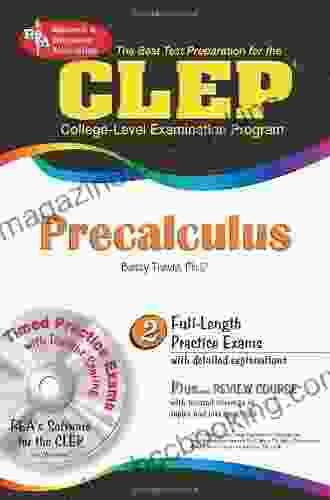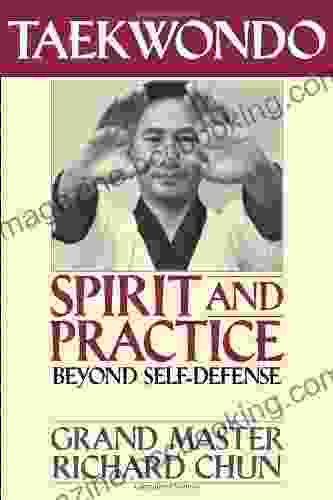Unveiling the Nuances of Verb Verb Complexes in Asian Languages: A Comprehensive Guide

Verb verb complexes (VVCs) are a ubiquitous feature in Asian languages, captivating the attention of linguists with their intricate structures and diverse functions. Characterized by the combination of two or more verbs, VVCs transcend the boundaries of traditional grammatical categories, blurring the lines between verbs, nouns, and adjectives. This comprehensive guide delves into the fascinating world of VVCs in Asian languages, unraveling their complexities and illuminating their significance in shaping the grammar, syntax, and semantics of these captivating languages.
Structural Diversity of VVCs
The structural diversity of VVCs in Asian languages is a testament to their multifaceted nature. They come in various forms, each with unique characteristics and functional properties. One prominent type is the serial verb construction (SVC),which involves a sequence of verbs without any intervening conjunctions or particles. SVCs are prevalent in Southeast Asian languages such as Thai, Vietnamese, and Burmese, and contribute to the vivid and dynamic nature of these languages.
4.8 out of 5
| Language | : | English |
| File size | : | 11838 KB |
| Screen Reader | : | Supported |
| Print length | : | 608 pages |
| Lending | : | Enabled |
Another form of VVC is the compound verb, where two or more verbs are combined into a single lexical unit with a modified meaning. Compound verbs abound in Japanese and Korean, enriching their vocabulary and allowing for the expression of complex concepts in a concise and efficient manner.
Cross-Linguistic Variations
While VVCs share commonalities across Asian languages, they also exhibit remarkable cross-linguistic variations. In Mandarin Chinese, for instance, VVCs often involve a light verb followed by a full verb, a pattern that is less common in other Asian languages. In contrast, VVCs in Thai and Vietnamese tend to be more complex and may involve multiple verbs, adverbs, and particles, reflecting the rich and elaborate verbal system of these languages.
These cross-linguistic variations underscore the diversity of VVCs across Asian languages, demonstrating the innovative and adaptive nature of language as it evolves within different cultural and linguistic contexts.
Syntactic and Semantic Functions
VVCs play a pivotal role in the syntax and semantics of Asian languages. Syntactically, they function as verbal phrases or clauses, expanding the expressive potential of verbs and allowing for the construction of more complex and nuanced sentences. For example, in Japanese, the compound verb "miru" (to see) can be combined with the light verb "kikoeru" (to be visible) to create the VVC "mieru," which conveys the meaning "to appear" or "to come into view."
Semantically, VVCs often express complex concepts or convey subtle nuances that cannot be easily captured by single verbs. In Thai, the SVC "tua pai" (to go to sleep) combines the verbs "tua" (to sleep) and "pai" (to go),indicating a gradual or progressive process of falling asleep. Such semantic nuances add depth and expressiveness to Asian languages, enabling speakers to convey intricate thoughts and emotions with precision.
Cultural and Historical Influences
The prevalence and diversity of VVCs in Asian languages can be attributed to a combination of cultural and historical factors. In many Asian cultures, there is a strong emphasis on politeness, formality, and respect, which is reflected in the elaborate and nuanced verbal systems of these languages. Additionally, the long history of contact and exchange between Asian languages has facilitated the cross-fertilization of grammatical structures and the incorporation of VVCs into various linguistic contexts.
Implications for Language Learning and Linguistic Research
Understanding VVCs is crucial for learners of Asian languages as they are essential for constructing grammatically correct and meaningful sentences. Neglecting VVCs can lead to communication breakdowns and hinder the ability to fully appreciate the richness and complexity of these languages.
For linguistic researchers, VVCs offer a fertile ground for investigation, providing insights into the intricate workings of grammar, syntax, and semantics. By studying VVCs, researchers can unravel the mechanisms that drive linguistic diversity and identify universal principles that govern language structure.
Verb verb complexes are a captivating phenomenon in Asian languages, showcasing their structural diversity, cross-linguistic variations, and syntactic and semantic versatility. They are a testament to the creativity and expressive power of human language, and their study provides valuable insights into the grammar, syntax, and semantics of Asian languages. Whether you are a language learner, a linguistic researcher, or simply curious about the intricacies of language, understanding VVCs is an essential step towards delving into the fascinating world of Asian languages.
4.8 out of 5
| Language | : | English |
| File size | : | 11838 KB |
| Screen Reader | : | Supported |
| Print length | : | 608 pages |
| Lending | : | Enabled |
Do you want to contribute by writing guest posts on this blog?
Please contact us and send us a resume of previous articles that you have written.
 Book
Book Novel
Novel Page
Page Chapter
Chapter Text
Text Story
Story Genre
Genre Reader
Reader Library
Library Paperback
Paperback E-book
E-book Magazine
Magazine Newspaper
Newspaper Paragraph
Paragraph Sentence
Sentence Bookmark
Bookmark Shelf
Shelf Glossary
Glossary Bibliography
Bibliography Foreword
Foreword Preface
Preface Synopsis
Synopsis Annotation
Annotation Footnote
Footnote Manuscript
Manuscript Scroll
Scroll Codex
Codex Tome
Tome Bestseller
Bestseller Classics
Classics Library card
Library card Narrative
Narrative Biography
Biography Autobiography
Autobiography Memoir
Memoir Reference
Reference Encyclopedia
Encyclopedia Kathleen M Eisenhardt
Kathleen M Eisenhardt Key Miller
Key Miller Keith Osborn
Keith Osborn Kim Heacox
Kim Heacox Kelly Corrigan
Kelly Corrigan Katrine Engberg
Katrine Engberg Steven Cronin
Steven Cronin Mike Malloy
Mike Malloy Sara Horowitz
Sara Horowitz Rachel Cruze
Rachel Cruze Phil Huddleston
Phil Huddleston Kathryn Clay
Kathryn Clay Natalia Sobrevilla Perea
Natalia Sobrevilla Perea Kes Gray
Kes Gray Yvonne Jones
Yvonne Jones Kevin Savetz
Kevin Savetz Kicki Hansard
Kicki Hansard Kristen Johnston
Kristen Johnston Kathryn Short
Kathryn Short Kerri Kokias
Kerri Kokias
Light bulbAdvertise smarter! Our strategic ad space ensures maximum exposure. Reserve your spot today!

 George Bernard ShawMaster Precalculus with CLEP: The Ultimate CLEP Precalculus Preparation Guide
George Bernard ShawMaster Precalculus with CLEP: The Ultimate CLEP Precalculus Preparation Guide Evan HayesThe Life and Times of Pancho Barnes: An Unforgettable Journey of an American...
Evan HayesThe Life and Times of Pancho Barnes: An Unforgettable Journey of an American... Miguel NelsonFollow ·12.1k
Miguel NelsonFollow ·12.1k Carter HayesFollow ·12k
Carter HayesFollow ·12k Ashton ReedFollow ·19.6k
Ashton ReedFollow ·19.6k Henry Wadsworth LongfellowFollow ·14.9k
Henry Wadsworth LongfellowFollow ·14.9k Warren BellFollow ·13.8k
Warren BellFollow ·13.8k Raymond ParkerFollow ·19.6k
Raymond ParkerFollow ·19.6k Gerald ParkerFollow ·19.5k
Gerald ParkerFollow ·19.5k Todd TurnerFollow ·4.5k
Todd TurnerFollow ·4.5k

 Joshua Reed
Joshua ReedUnveiling the Profound Essence of Taekwondo: Spirit and...
Taekwondo, an ancient...

 Clarence Brooks
Clarence BrooksUnveiling Clarity: The Common Sense Guide to Everyday...
In the labyrinthine world of legal...

 Anthony Wells
Anthony WellsBless Me, Ultima: A Literary Odyssey into the Heart of...
In the tapestry of American literature,...

 Alexandre Dumas
Alexandre DumasPioneer Life Or Thirty Years A Hunter - A Captivating...
Discover the Raw and...

 Samuel Beckett
Samuel BeckettThe Mike Fisher Story: An Inspiring Tale of Faith,...
Prepare to be...
4.8 out of 5
| Language | : | English |
| File size | : | 11838 KB |
| Screen Reader | : | Supported |
| Print length | : | 608 pages |
| Lending | : | Enabled |










